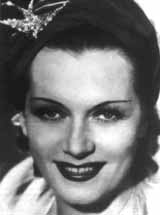
Olga Konstantinovna Chekhova, known in Germany as Olga Tschechowa, was a Russian-German actress. Her film roles include the female lead in Alfred Hitchcock's Mary (1931).
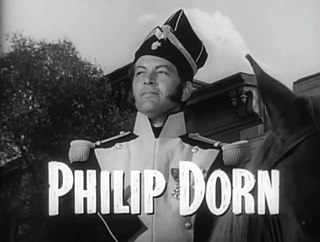
Philip Dorn, sometimes billed as Frits van Dongen, was a Dutch American actor who had a career in Hollywood. He was best known for portraying the father in the film I Remember Mama (1948).

The Fox of Glenarvon is a German propaganda film from the Nazi era portraying the years of the Irish fight for independence during World War I. It was produced in 1940 by Max W. Kimmich and starred Olga Chekhova, Karl Ludwig Diehl, Ferdinand Marian and others. The screenplay was written by Wolf Neumeister and Hans Bertram based on a novel of the same title by Nicola Rhon that had been published by the Ullstein publishing house in 1937. It was made at the Johannisthal Studios in Berlin, with sets designed by the art directors Wilhelm Depenau and Otto Erdmann. The shoot lasted from December 1939 to February 1940. It passed censorship on 22 April 1940 and had its debut in Berlin's Ufa-Palast am Zoo two days later.
Kauf dir einen bunten Luftballon is a 1961 West German / Austrian film directed by Géza von Cziffra.

Rose-Girl Resli is a 1954 West German drama film directed by Harald Reinl and starring Christine Kaufmann, Josefin Kipper and Paul Klinger. The film made the child actress Kaufmann into a star. It was the debut film of the actress Karin Dor, who later married the director. It was shot at the Wiesbaden Studios in Hesse and on location in the vicinity. The film's sets were designed by the art director Heinrich Beisenherz.
Katharina Mayberg (1925–2007) was a German film and television actress.
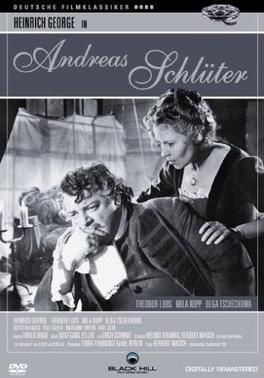
Andreas Schlüter is a 1942 German historical drama film directed by Herbert Maisch and starring Heinrich George, Mila Kopp and Olga Chekhova. It portrays the life of the 18th-century German architect Andreas Schlüter. It was shot at the Babelsberg Studios and Althoff Studios in Berlin. The film's sets were designed by the art directors Hermann Asmus, Kurt Herlth and Robert Herlth.

Eva in Silk is a 1928 German silent film directed by Carl Boese and starring Lissy Arna, Walter Rilla and Margarete Kupfer. It was shot at the National Studios in Berlin. The film's sets were designed by the art director Karl Machus.
Diane is a 1929 German silent film directed by Erich Waschneck and starring Olga Chekhova, Pierre Blanchar, and Henry Victor.
The Almighty Dollar is a 1923 German silent film directed by Jaap Speyer.
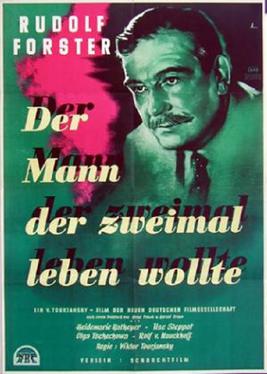
The Man Who Wanted to Live Twice is a 1950 West German drama film directed by Viktor Tourjansky and starring Rudolf Forster, Olga Chekhova and Heidemarie Hatheyer. The future star Marianne Koch made her debut in this film, having been discovered by the director while working at the Bavaria Studios in Munich. The film's sets were designed by the art directors Franz Bi and Botho Hoefer. It was shot at the Bavaria Studios in Munich.
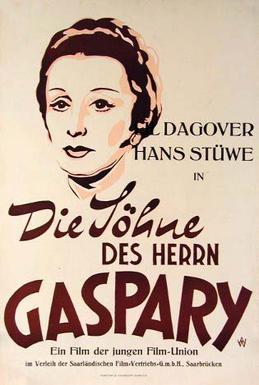
Gaspary's Sons is a 1948 German drama film directed by Rolf Meyer and starring Lil Dagover, Hans Stüwe and Inge Landgut. It was shot at the Bendestorf Studios near Hamburg and on location at Kleinwalsertal in western Austria. The film's sets were designed by the art director Erich Grave.
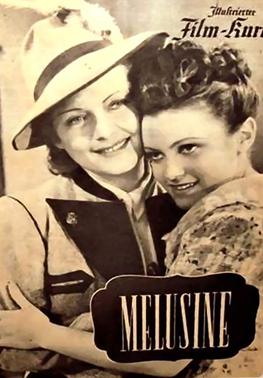
Melusine is a 1944 German drama film directed by Hans Steinhoff and starring Olga Chekhova, Siegfried Breuer and Angelika Hauff.

In the Temple of Venus is a 1948 German drama film directed by Hans H. Zerlett and starring Olga Chekhova, Willy Birgel, and Hermann Speelmans. The film was originally produced during the final stages of the Second World War in 1945, but was not given a release until three years later.

Artist Love is a 1935 German historical drama film directed by Fritz Wendhausen and starring Inge Schmidt, Wolfgang Liebeneiner and Olga Chekhova.

Immortal Light is a 1951 West German drama film directed by Arthur Maria Rabenalt and starring Rudolf Forster, Cornell Borchers and Volker von Collande. It was shot at the Bavaria Studios in Munich and on location in Paris. The film's sets were designed by the art directors Willi A. Herrmann and Heinrich Weidemann.

The Twins from Immenhof is a 1973 West German family drama film directed by Wolfgang Schleif and starring Heidi Brühl, Horst Janson and Olga Chekhova. Set in Schleswig-Holstein, the film is in the post-war Heimatfilm tradition.

Spring in Immenhof is a 1974 West German family film directed by Wolfgang Schleif and starring Heidi Brühl, Horst Janson and Olga Chekhova. It is the fifth and last of the series of Immenhof films, part of the heimatfilm tradition. It marked the final film appearance of the veteran actress Olga Chekhova.

I Was an Ugly Girl is a 1955 West German romantic comedy film directed by Wolfgang Liebeneiner and starring Sonja Ziemann, Dieter Borsche and Karlheinz Böhm. It is based on the 1937 novel of the same title by Annemarie Selinko. It was shot at the Spandau Studios in West Berlin. The film's sets were designed by the art directors Mathias Matthies and Ellen Schmidt.

Between Two Hearts is a 1934 German drama film directed by Herbert Selpin and starring Harry Liedtke, Luise Ullrich and Olga Chekhova. It is based on the novel Ulla die Tochter by Werner Scheff. It was shot at the Marienfelde Studios of Terra Film in Berlin and on location in Bavaria. The film's sets were designed by the art director Robert A. Dietrich.
















